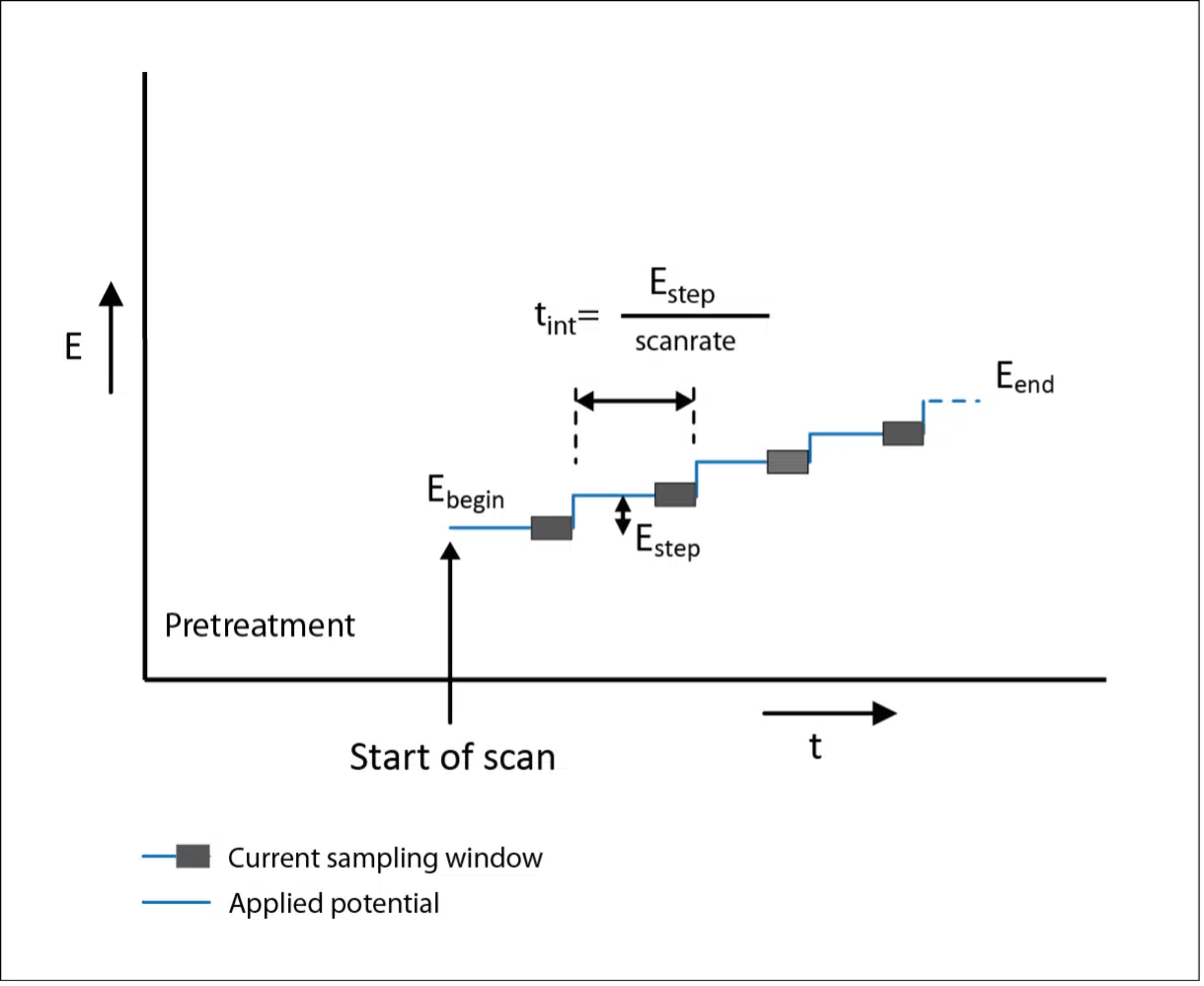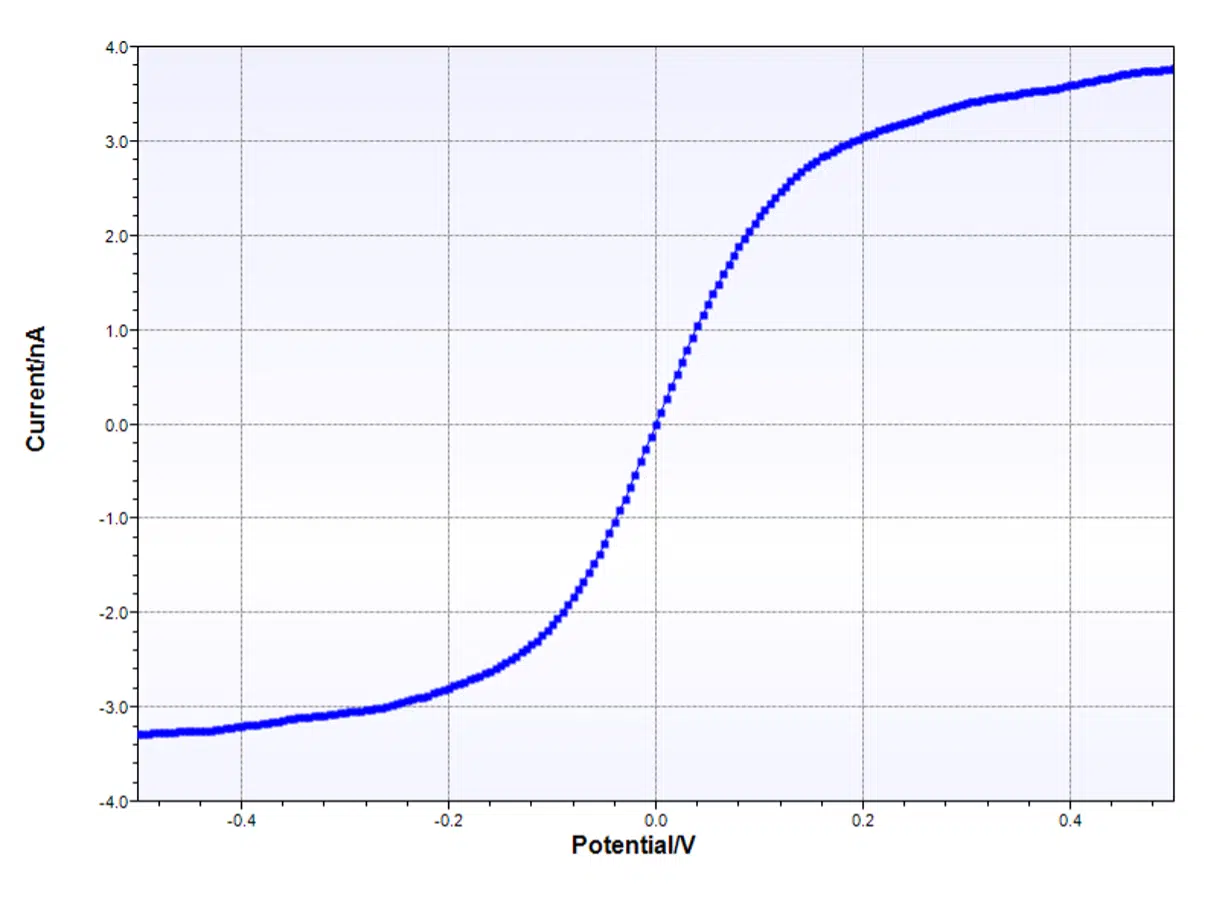Linear Sweep Voltammetry (LSV)
Linear Sweep Voltammetry is also known as Linear Polarization. In Linear Sweep Voltammetry a potential scan is performed from the begin potential, E begin, to the end potential E end. The scan is not really linear, but small potential steps (E step) are made.
The current is measured (sampled) during the last 25% interval period of each step. So the number of points in the curve of the current versus potential is (E end – E begin) / E step + 1.
The scan rate is specified in V/s, which determines the time between two steps and thus the sampling time. The interval time is E step / scan rate. So, when E step is 0.005 V and the scan rate 0.1 V/s the interval time is 0.05 s.


